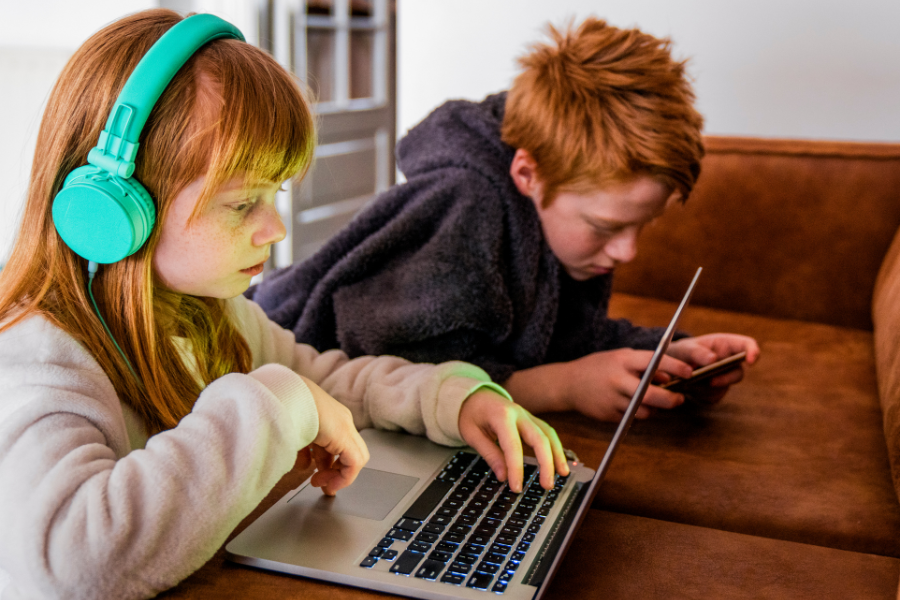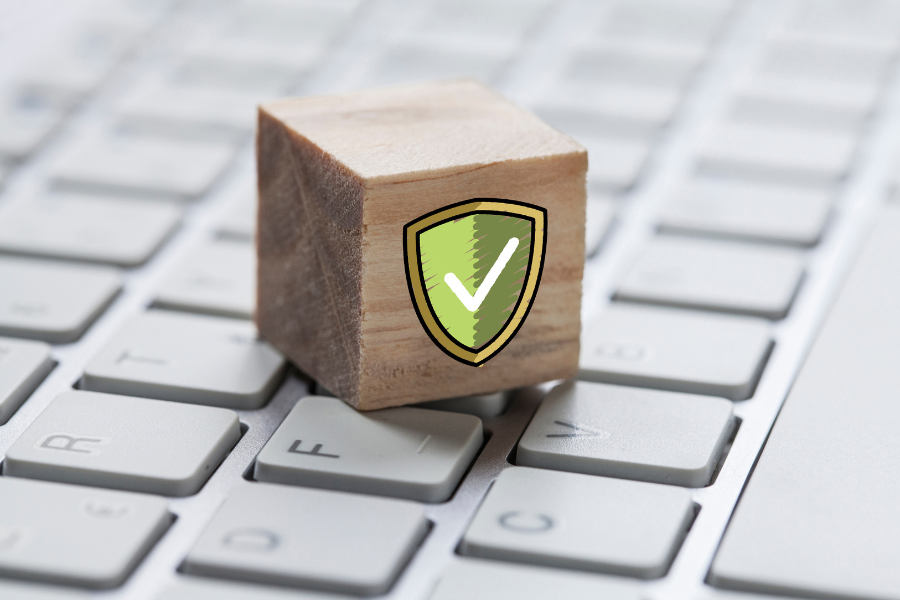HOT OFFER! Save $180 on selected internet plans + get beIN SPORTS CONNECT included!...Use promo code BEIN30 at checkout! Hurry, limited time only!
Cyber Safety for Kids: Internet Safety for Kids Online
Family & Internet Blog | MATE | 15 January 2024

Cyber safety for kids has become more crucial than ever before. As children navigate the vast online world, they are exposed to a huge array of experiences. Some of these experiences can be enriching and educational, but some can be potentially harmful.
This is why it’s so important for parents and guardians to have an active role in guiding their children’s online activities. Here we shed light on the importance of internet safety for kids, offering practical tips and strategies to ensure they remain safe online. From understanding the online risks to establishing effective internet usage rules, we’ll explore how to keep our kids safe online and foster a secure digital environment for them to learn, play, and grow.
Understanding the online risks for kids
The digital landscape, while offering boundless opportunities for learning and entertainment, also harbours various online dangers that pose significant risks to children. One of the most prevalent concerns is online bullying, where kids may face harassment and abuse from peers or strangers. This form of online abuse can have lasting emotional impacts and affect a child’s self-esteem and mental health.
Another critical risk involves online predators who may exploit the innocence of young internet users. These predators often lurk in chat rooms, social media platforms, and online gaming environments, posing a serious threat to children’s safety.
Exposure to inappropriate content is also a significant online concern. The internet is filled with material that is not suitable for young minds. Such exposure can be distressing and have long-term effects on a child’s development.
Understanding these online risks is the first step towards protecting children. It’s essential to recognise the potential dangers and take proactive measures to mitigate them, ensuring a safer online experience for our kids.
Establishing rules for internet use
To keep kids safe online, it’s vital to establish clear and age-appropriate rules for internet use. These rules should be tailored to the child’s age, maturity level, and the family’s values. Here are just a few suggestions for steps you can take to help keep your kids safe online:
1. Establish clear internet rules:
- Tailor rules to your child’s age, maturity level, and your family’s values.
- For younger children, consider limiting screen time, restricting access to certain websites, and actively monitoring their online activities.
2. Foster open communication:
- Encourage your children to openly share their online experiences, both positive and negative.
- Create an environment where they feel comfortable discussing any online concerns or incidents, including experiences of online abuse.
3. Educate about online privacy:
- Teach your children the importance of protecting their personal information online.
- Discuss the risks of sharing sensitive information and the importance of using privacy settings on social media and other online platforms.
4. Guide social media use:
- Discuss the appropriate use of social media and the potential risks involved.
- Set guidelines for what is acceptable to post and share, and the importance of being respectful and kind online.
5. Use parental control software:
- Implement parental control tools to manage and monitor your child’s online activity.
- These tools can help filter inappropriate content, set time limits on internet use, and keep track of online behaviour, adding an extra layer of online safety for your kids.
By setting clear guidelines and maintaining open communication, parents can help their children navigate the online world safely and responsibly, reducing the risk of online dangers and ensuring a positive and educational online experience.

The role of parental control software
When it comes to cyber safety for kids, parental control software plays a pivotal role. This software is designed to help parents monitor and manage their children’s online activities. It offers various features such as website filtering, time controls, and activity tracking, which are essential in safeguarding kids from online dangers.
When choosing parental controls, it’s important to look for features that suit your family’s needs. Some handy features of parental control software include:
-
Content filtering:
Gives you the ability to block or allow specific websites and filter out inappropriate websites and harmful content based on categories like violence, adult content, or gambling.
-
Time management:
These tools allow you to set time limits for internet use or specific applications, helping manage screen time online effectively.
-
Activity monitoring:
These features track and report on the websites visited, apps used, and the amount of time spent on each, providing insights into the child’s online behaviour.
-
App blocking/management:
Gives you options to block or limit access to certain apps, particularly social media or games, that might be distracting or inappropriate.
-
Social media monitoring:
These tools monitor activity on social media platforms, which can be crucial for spotting potential issues like cyberbullying or inappropriate interactions.
-
Search history tracking:
Allows you to keep logs of search queries to understand what information your child is seeking online.
-
Remote management:
Grants the ability to adjust settings and monitor activity remotely, often via a parent’s smartphone or web interface.
-
Customisable profiles:
Provides options to create different profiles for each child, allowing for age-appropriate settings and restrictions.
-
Real-time alerts:
Get notifications sent to you for specific activities, such as attempts to access blocked sites or exceeding time limits.
Remember, while parental control software is a useful tool, it should be complemented with open communication and education about online safety for kids. When you strike a balance between supervision and trust, you can help ensure your child feels both secure and respected in their online exploration.
Educating kids about online safety
Educating children about online safety is a crucial aspect of cyber safety for kids. It’s important to teach them about the importance of maintaining privacy online and exercising caution in their online interactions. This education should include discussions about the risks of sharing personal information, the potential of encountering inappropriate content, and the dangers of online scams and threats.
To make sure these lessons are sinking in, try using age-appropriate language and examples. Role-playing scenarios can also be a helpful tool in teaching kids how to react in various online situations. Encourage them to always think critically about the information they share and the people they interact with online.
Additionally, make them aware of the signs of online scams and how to recognise suspicious behaviour. Emphasise the importance of never sharing personal details with strangers or clicking on unknown links. By arming kids with knowledge and critical thinking skills early on, you can empower them to navigate the online world safely and confidently.

Dealing with online bullying and harassment
Online bullying is a significant concern in the online world, with the increased availability of mobile phones and instant messaging. There are potentially severe impacts on a child’s mental and emotional well-being if bullied online. It’s crucial for parents to recognise the signs of online harassment to protect children and know how to support their children if they become victims.
Helping your child deal with online bullying
If your child faces online bullying, the first step is to offer a supportive and understanding environment. Encourage them to talk about their experiences and express their feelings. It’s important to validate their emotions and reassure them that the bullying is not their fault.
Next, document the bullying incidents by taking screenshots or saving messages. This evidence can be crucial if you need to report the behaviour to school authorities or law enforcement.
You can also teach your child how to block or report bullies on social media platforms and gaming sites. Discuss strategies for responding to bullies, such as not engaging with them and seeking help from a trusted adult.
Encouraging safe online friendships
Navigating online friendships can be a complex aspect of a child’s digital life. It’s important for kids to understand the need for caution when interacting with online friends. Parents should guide their children on how to establish and maintain safe online relationships.
Encourage children to share their online interactions with a trusted adult. Teach them to be wary of sharing personal information with online acquaintances and to be cautious about meeting online friends in real life. Discuss the signs of potentially harmful online relationships, such as someone asking for personal details, engaging in inappropriate conversations, or pressuring them to meet offline. By setting these guidelines, children can enjoy the benefits of online friendships while minimising the risks.
Keeping kids safe online: A comprehensive approach
Keeping your kids safe online takes a multi-faceted approach. And at the core of any cyber safety strategy is parental involvement. As a parent or guardian to a young child, your involvement is key in making sure they have safe and educational online experiences.
So while the internet offers an incredible resource for learning and entertainment, it also presents challenges that require vigilance and proactive measures. By staying informed, involved, and supportive, we can ensure that our kids not only navigate the online world safely but also harness its vast potential for their growth and development.

